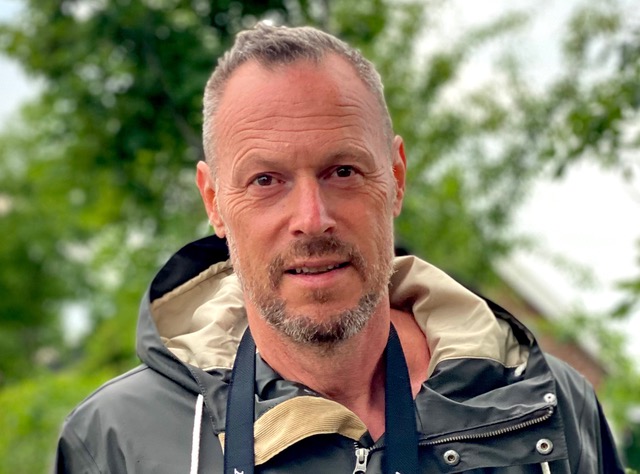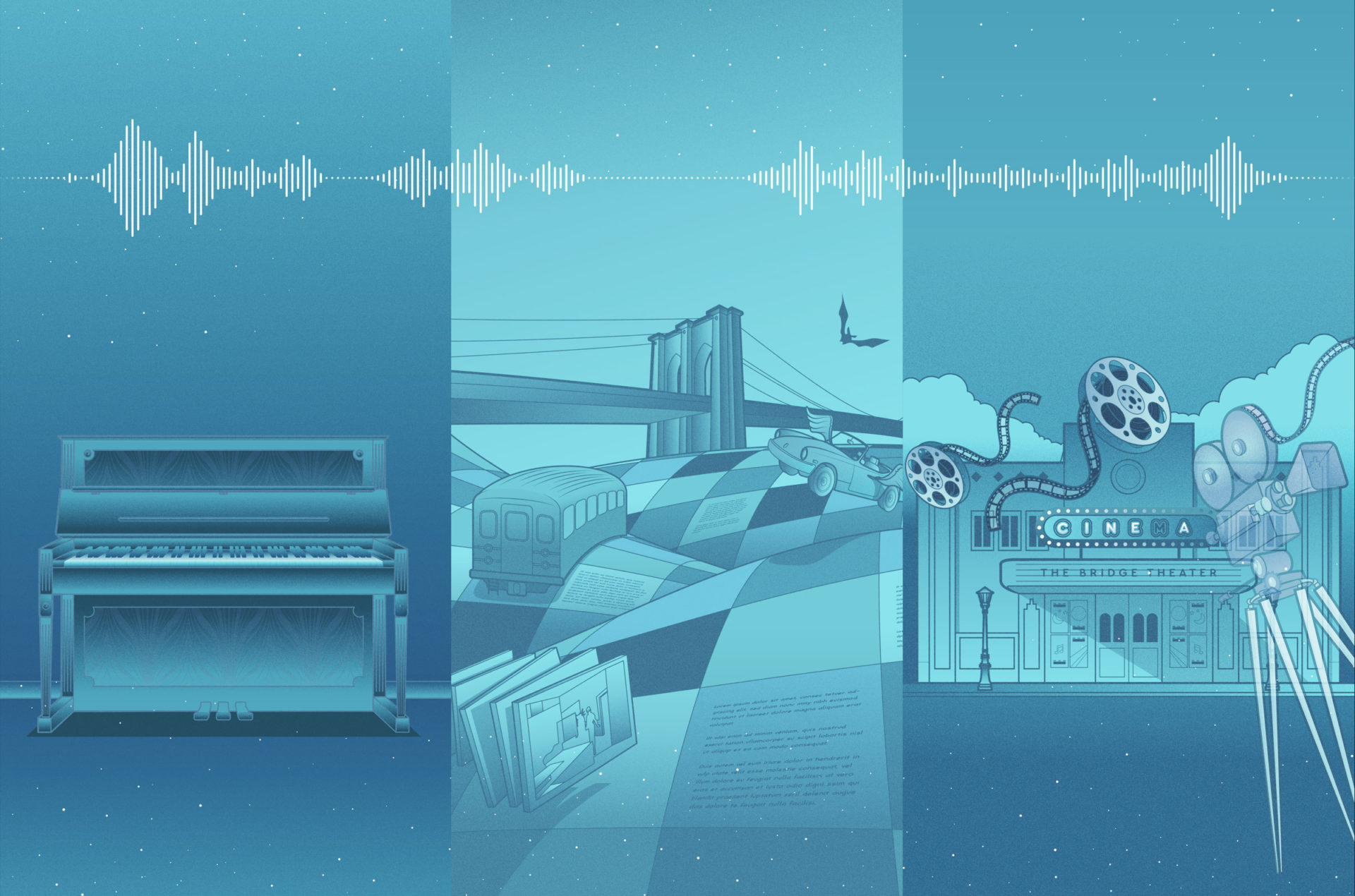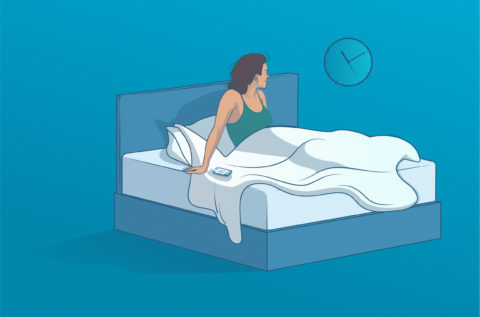Anders Tempelman is the prolific screenplay writer who after a successful career in advertising reinvented himself and moved into writing screenplays for TV and movies. Tempelman is also the author behind Sleep Cycle’s popular Sleep Stories; ‘American Patchwork’, and ‘The Bridge Theatre’ within Sleep Aid, where he has tapped into his habit of visual storytelling to craft sublime stories our users can listen to, to help them fall asleep.
This week, Sleep Cycle releases Tempelman’s latest sleep story: ‘Manhattan Dollhouse’, the final installment of a trilogy set in New York. We met up with Tempelman to catch up with the creative mind behind some of our most loved-and-listened-to sleep aids.
Q: Tell us more about yourself!
I trained as a copywriter over 25 years ago and have founded 2 advertising agencies. Eventually, I realized I enjoyed storytelling more than selling stuff, so I moved into writing screenplays instead. I came across the Sleep Cycle app very early on and have enjoyed the creative freedom of writing short stories for Sleep Cycle’s Sleep Aid feature, but with the specific purpose of helping people sleep.
Q: Can you walk us through the process of crafting a story with the specific purpose of helping people fall asleep?
Today I work almost exclusively as a screenwriter, which by nature is collaborative work. I have a vision, the director has a vision, the producer has a vision, the production company has a budget and so on. So it is very liberating to have free rein when writing the sleep stories for Sleep Cycle. There was a clear task of course, and a structure to follow. For example, I tend to inject humor into much of my regular work, but making people laugh out loud as you’re trying to lull them into sleep, is a no-no! But once Andreas Roman (Sleep Cycle’s Head of Content) explained the mood and rhythm he was after, the story took on its own life. I found it stimulating to create an atmospheric piece to lull people into a deep sleep.
Q: Do you have any common thread that runs through your different stories on Sleep Aid?
As a screenwriter, I’m trained to write texts almost as images. This is something I apply when writing sleep stories, essentially conjuring up visuals for the listener. There’s a clear beginning, middle and end, however it’s almost as if in a dreamlike state the story moves forward. I also have a fascination with discovered secret spaces, locked doors, hidden passageways and so on. There’s also the obvious inspiration from Paul Auster’s ‘The New York Trilogy’. All three stories are set in New York. There’s a string of coincidences, one event seamlessly leading to another, blending together, as in within a dream.
Q: Your stories are rich in detail – is this a conscious method when crafting a sleep story?
As these aren’t long, epic novels, there needs to be more attention given to the smaller details. I want to create images for people to visualize. Almost holding their hand as they walk from room to room, observing all the little items and details of each room.
Q: Tell us more about your current stories in Sleep Aid, the inspiration, any favorite?
My favorite may just be American Patchwork – it’s a wonderful, layered sleep story. It’s also amazing to hear how the stories have been interpreted by the voice artists who read my stories within Sleep Aid.
Q: How has your creative work with sleep stories informed your own sleep habits?
I’m lucky in that I have good sleep and a rather uncomplicated relationship with sleep. I seem to be at my most creative in the evenings. I also play music and do that in the evenings. I get good energy from that. So perhaps my sleep chronotype is more of a night owl.

Q: Best and worst city for sleep?
Palermo, in Italy, wasn’t ideal for a good night’s sleep. The best place for sleep? I live in a suburb called Enebyberg outside Stockholm. It’s quiet and peaceful and perfect for sleep. As a general rule, flights are the worst place to get decent sleep.
Q: You’ve chosen New York as a backdrop for your 3 stories in Sleep Aid, not necessarily a city you associate with sleep. Tell us your relationship with the city?
I discovered New York later in life. I was 35 when I first visited and then kept going back when my daughter moved there. I fell in love. As a child, I had a picture book of New York and most likely had carried a subconscious yearning for visiting and experiencing the city. I was blown away and wanted to set the stories there.
Q: Do you have some particular sleep ritual at bedtime?
I can manage on less sleep, but still usually end up sleeping around 7.5 hours. I also always have a book on my bedside table, I like to read just before sleeping and find I sleep well from that. I enjoy books that are engaging. However, if you need a dull book to put you to sleep faster, apparently Joseph Heller said that he used to read Henry Kissinger’s memoirs to help him fall asleep.
Q: Have you ever fallen asleep whilst writing your stories?
No, I can’t say that’s happened. I approach work in a structured way, I have fixed hours at the office and write during that time.
Q: We’re excited that as we speak we’re recording your latest sleep story – tell us more.
‘Manhattan Dollhouse’, which is my latest installment in the trilogy, is based on a story I had made up years ago to tell my children as a bedtime story. A child discovers a hidden, old doll factory and is allowed to pick a doll to play with each day, but must put it back at the end of the day. I like the idea of layering stories, finding something unexpected. All of this fascinates me.
Q: Routine and regularity help sleep. Is it similar to writing?
Yes, it truly is, you can of course have creative impulses, but the craft of writing needs regularity and discipline. I do write journals, and I keep a dream diary next to my bed so I can pen them down before I forget them. I have recurring dreams that I’m able to capture and remember because of this.
Q: What’s your favorite Sleep Cycle feature?
My favorite feature is undoubtedly Sleep Aid and the sleep stories. A well-told sleep story to lull me into sleep is perfect, as are sounds to calm and relax my mind at bedtime.
‘Manhattan Dollhouse’, part of the premium Sleep Aid feature, is currently available for all Sleep Cycle users for a limited time only!
Try Sleep Cycle Premium for free









